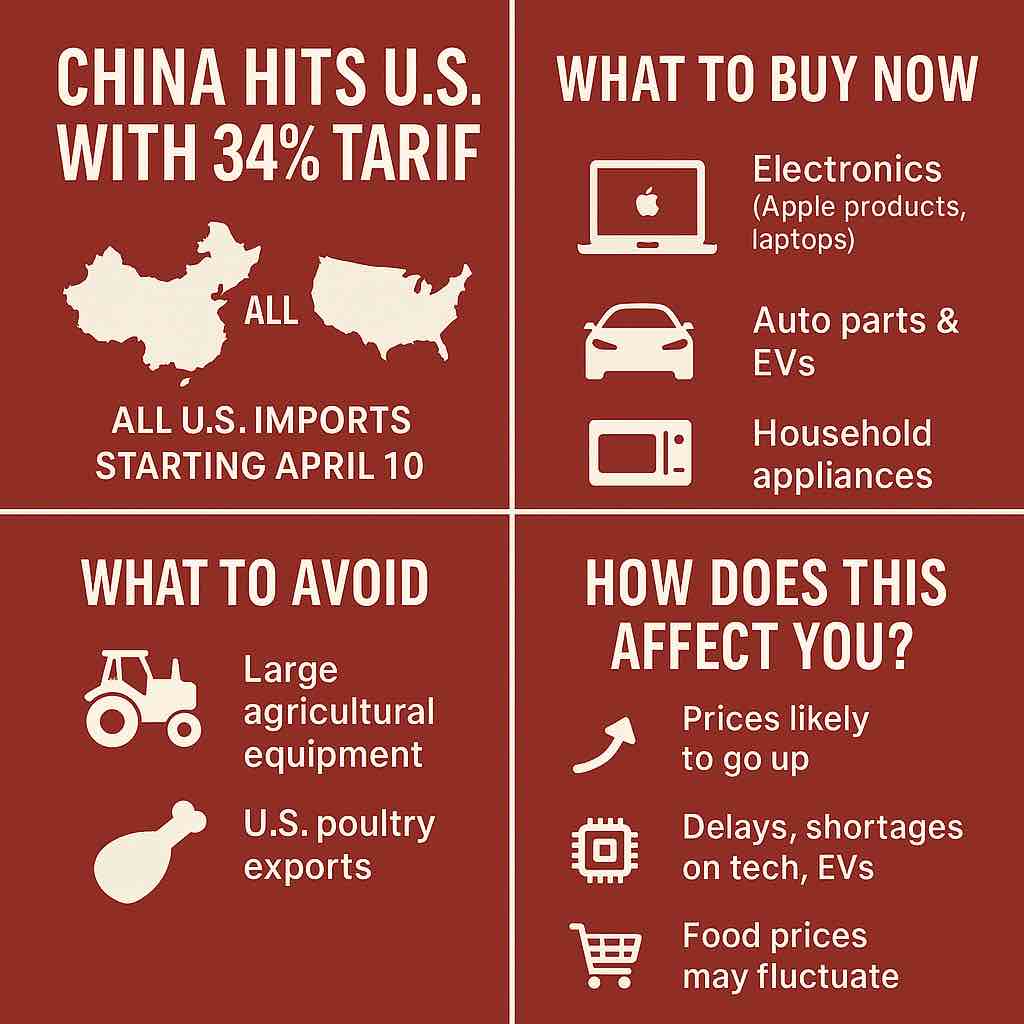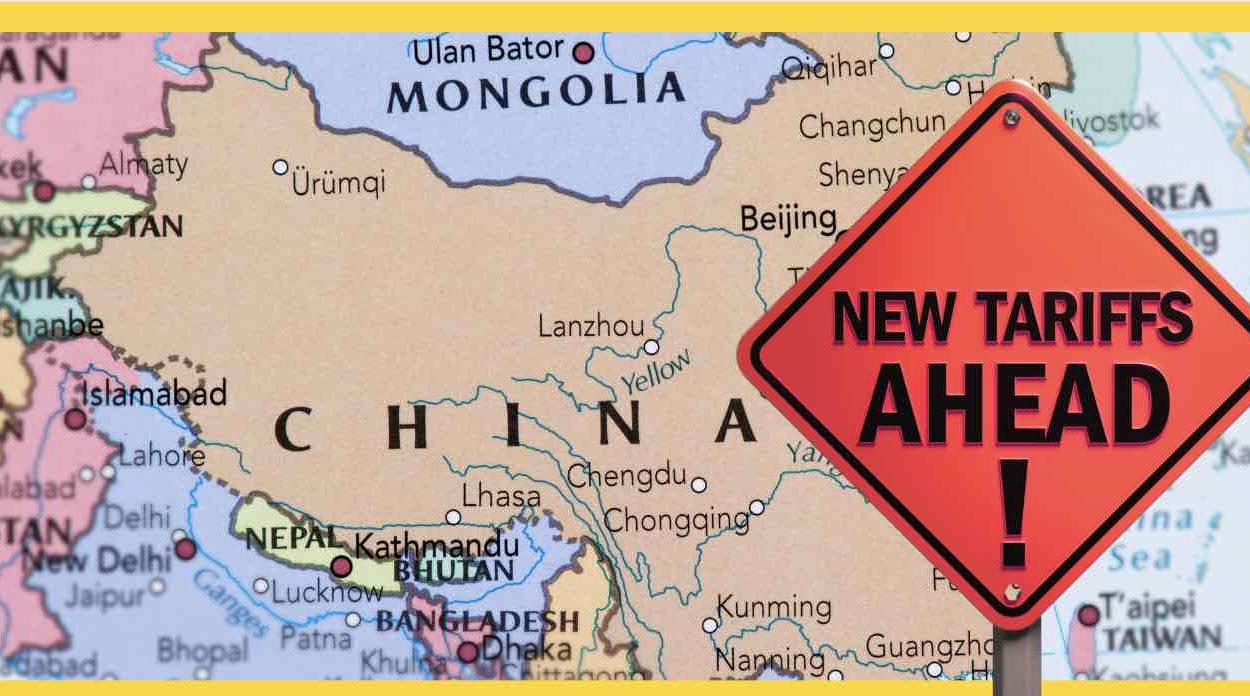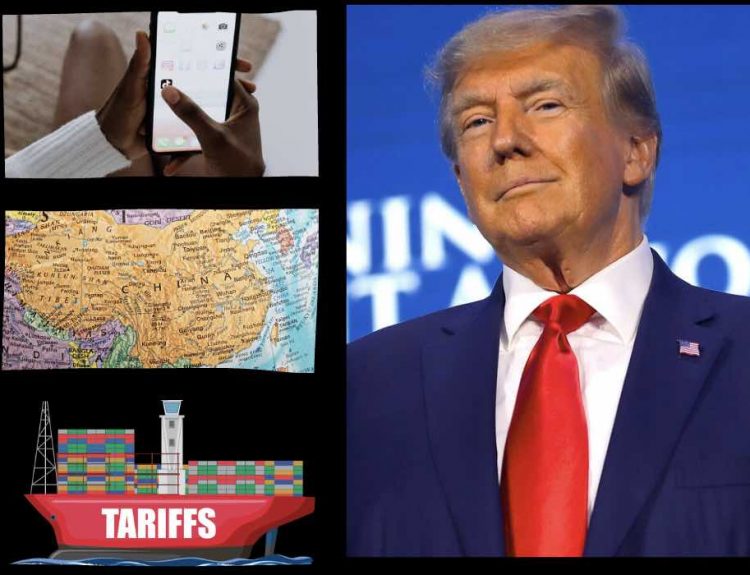China just dropped a bombshell on global trade. Starting April 10, 2025, all U.S. products imported into China will face a 34% tariff. This sudden escalation—part of China’s response to President Trump’s recent “Liberation Day” tariffs—will hit everything from electronics to agriculture.
But while politicians play chess, everyday consumers are caught in the crossfire. How China’s 34% tariff on U.S. imports affects consumers goes beyond headlines—it hits your pocket, your job, and even your grocery bill.
Why This Matters to You
Here’s how this impacts you, even if you don’t trade stocks or run a business:
- Prices are likely to go up: U.S. manufacturers will absorb some of the hit, but much of the cost will trickle down to consumers—especially for goods with complex global supply chains.
- Delays and shortages may hit tech and automotive sectors: China announced new export controls on rare earth elements like samarium and gadolinium—used in tech, MRI machines, and defense equipment. That means we may see higher prices and longer waits for laptops, EVs, and medical tech.
- Food prices may fluctuate: China is suspending imports of U.S. poultry and sorghum from certain suppliers, citing contamination. While this directly affects exports, expect ripple effects across food and agriculture industries.
What You Should Buy ASAP
- Electronics: Apple products, laptops, smartwatches—anything that relies on rare earths or is assembled in Asia. Prices may rise fast due to material shortages.
- Imported auto parts & EVs: China’s export restrictions could delay U.S. production and increase costs.
- Household appliances: Some may include components affected by China’s export controls or face U.S. tariff retaliation.

What You Shouldn’t Buy Right Now
- Large agricultural equipment: Heavily hit by China’s previous 10% tariffs, these could see prices drop as demand cools off abroad.
- U.S. poultry exports: If you’re in the business of buying or trading meat products, sit tight. China just flagged quality issues that could trigger longer-term bans or overhauls in supply chains.
- Stocks in heavily targeted sectors: Logistics (e.g., Universal Logistics Holding) and aerospace may dip short-term due to sanctions or bans.
A Bigger Economic Picture
This tariff is only one move in a growing list of retaliations:
- China is suing the U.S. at the WTO, citing violations of global trade rules.
- U.S. companies like High Point Aerotechnologies and DuPont China are under new scrutiny.
- China is tightening its grip on critical materials while adding U.S. firms to its trade sanctions list.
With tensions rising and international partners reacting too—see what Canada and Europe are doing in response—this isn’t an isolated event. As covered in our previous story, the 2025 federal cuts are already fueling layoffs, and Trump’s job and health plan cuts are compounding pressures.
For more global context, read: This is What China, Japan, and South Korea Think of Trump’s “Liberation Day”.
How China’s 34% tariff on U.S. imports affects consumers is not just about trade. It’s about supply chain disruption, rising costs, and uncertain futures. Whether you’re a shopper, a business owner, or just trying to plan your budget—it’s time to get informed, get ahead, and shop smart.

🚀 10,000+ Players Are Hooked on Sky Jumper! Are You In?
Join the hype and test your reflexes in Sky Jumper! See how far you can go—players can’t stop trying to beat their high scores!
Play Now & Join the Fun!





